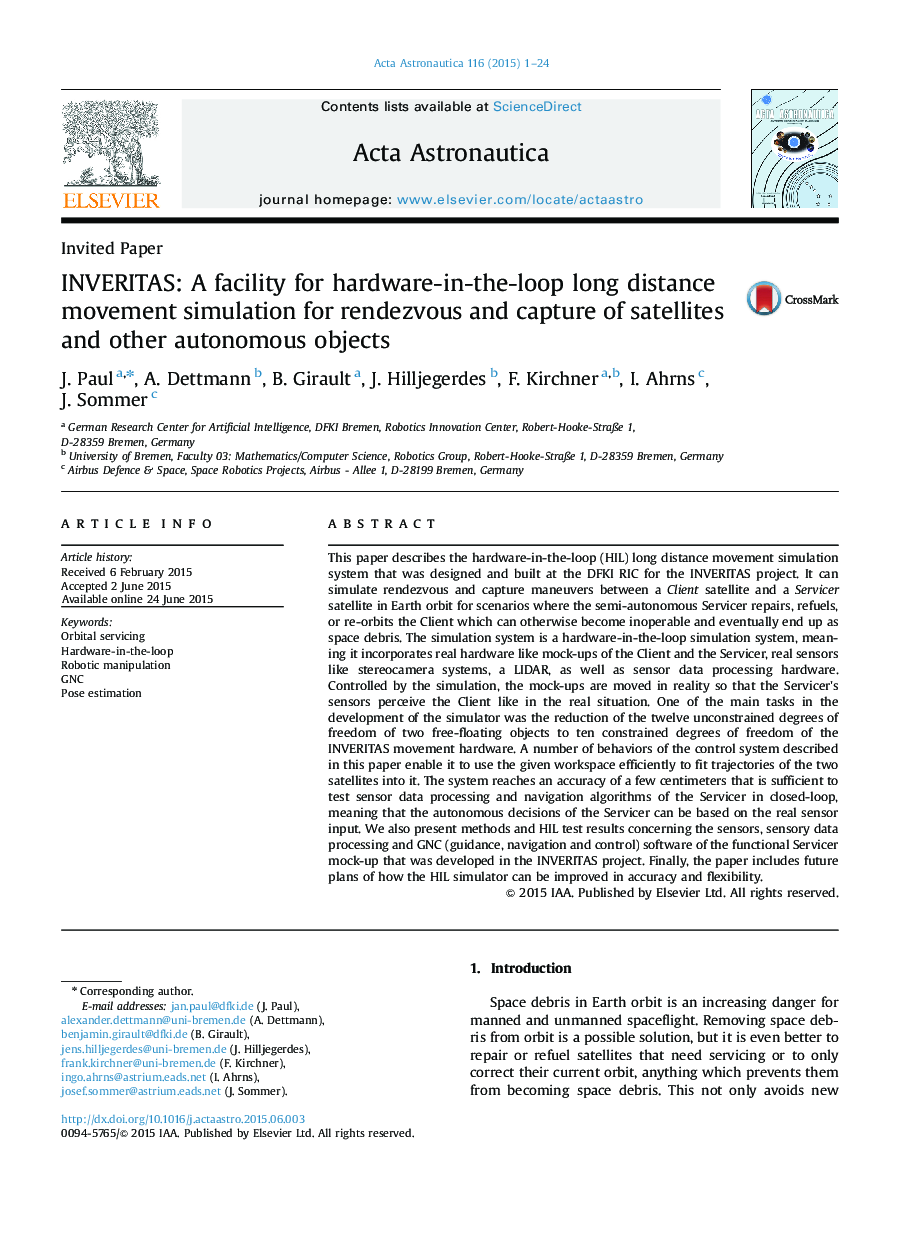| کد مقاله | کد نشریه | سال انتشار | مقاله انگلیسی | نسخه تمام متن |
|---|---|---|---|---|
| 1714273 | 1519938 | 2015 | 24 صفحه PDF | دانلود رایگان |

• We develop a hardware-in-the-loop (HIL) simulation system for satellite rendezvous.
• We translate the degrees of freedom of two satellites to the movement system.
• Offline calibration increases the precision of the mock-up movement system.
• We present a new GNC that was tested inside the hardware-in-the-loop simulator.
• An initial pose-estimation can be achieved using 3D-Template-Matching.
This paper describes the hardware-in-the-loop (HIL) long distance movement simulation system that was designed and built at the DFKI RIC for the INVERITAS project. It can simulate rendezvous and capture maneuvers between a Client satellite and a Servicer satellite in Earth orbit for scenarios where the semi-autonomous Servicer repairs, refuels, or re-orbits the Client which can otherwise become inoperable and eventually end up as space debris. The simulation system is a hardware-in-the-loop simulation system, meaning it incorporates real hardware like mock-ups of the Client and the Servicer, real sensors like stereocamera systems, a LIDAR, as well as sensor data processing hardware. Controlled by the simulation, the mock-ups are moved in reality so that the Servicer׳s sensors perceive the Client like in the real situation. One of the main tasks in the development of the simulator was the reduction of the twelve unconstrained degrees of freedom of two free-floating objects to ten constrained degrees of freedom of the INVERITAS movement hardware. A number of behaviors of the control system described in this paper enable it to use the given workspace efficiently to fit trajectories of the two satellites into it. The system reaches an accuracy of a few centimeters that is sufficient to test sensor data processing and navigation algorithms of the Servicer in closed-loop, meaning that the autonomous decisions of the Servicer can be based on the real sensor input. We also present methods and HIL test results concerning the sensors, sensory data processing and GNC (guidance, navigation and control) software of the functional Servicer mock-up that was developed in the INVERITAS project. Finally, the paper includes future plans of how the HIL simulator can be improved in accuracy and flexibility.
Journal: Acta Astronautica - Volume 116, November–December 2015, Pages 1–24